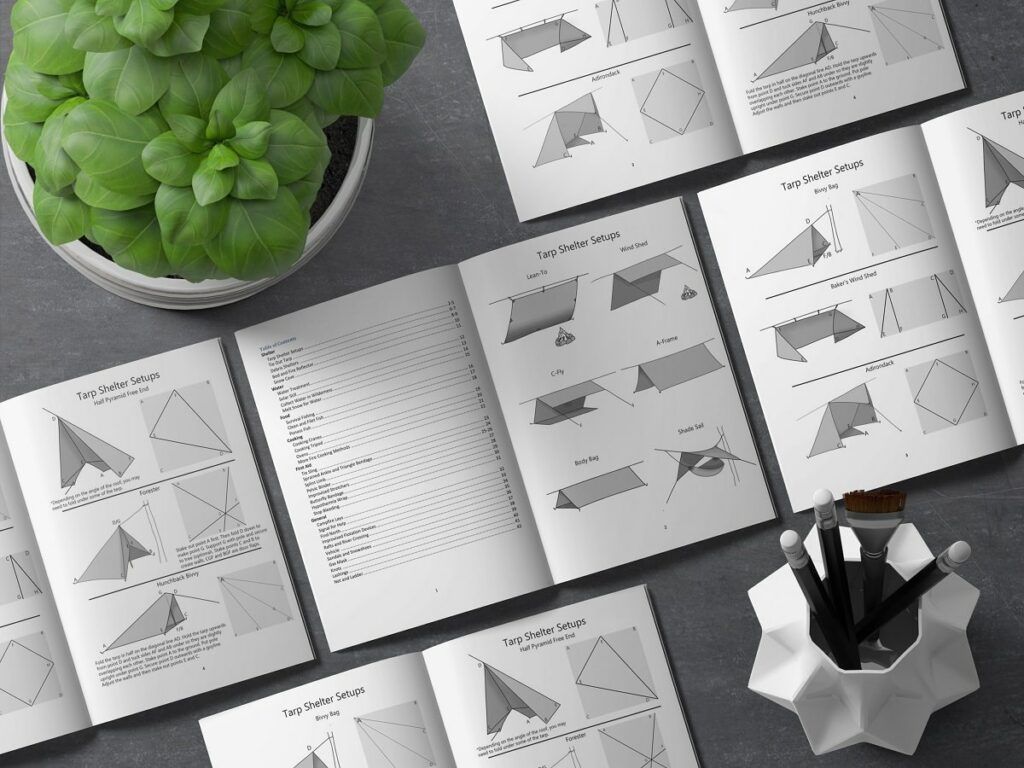You’ve probably heard about reishi.
With nicknames like “soul mushroom” and “mushroom of immortality,” this fungus has quite the reputation. Eastern practitioners have used reishi for over 2,000 years to fight everything from depression to dementia, and modern research supports many of these traditional applications.
Sounds exotic, right? Well, you can find reishi right here at home!
Read on for a complete guide to reishi mushroom identification, including where to search for these fabulous fungi and how to tell them apart from common look-alikes in the field.
How to Identify Reishi
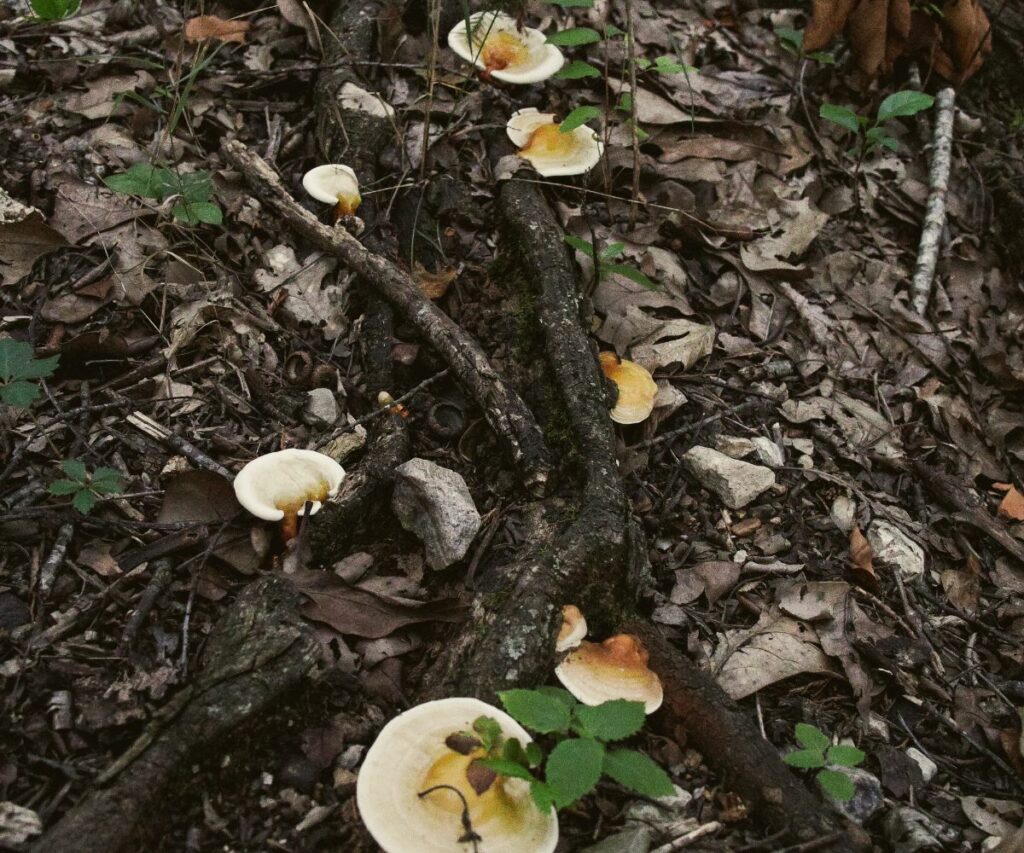
Reishi are polypore mushrooms of the genus Ganoderma, a name derived from the Greek words ganos (brightness) and derma (skin). True to their nomenclatural origins, many reishi appear varnished or laccate on top.
But there are other shiny shrooms in the forest, and we can’t rely solely on the cap to make a positive ID. We’ve got to look at the fungus holistically, examining its habitat and growth conditions along with additional macroscopic features.
Appearance
While some Reishi grow just a few inches across, others may reach over a foot. If you come across a possible specimen, you’ll need to study the following characteristics closely to make a positive ID:
- Cap: Young reishi mushrooms sprout in knobby points of white and darken as they grow, widening and becoming laccate. They form rosettes occasionally, but most mature specimens are fan or kidney-shaped.
Margins are lobed and feature shades of brown, red, orange, or yellow. The colors may change gradually across the cap or appear in distinct color zones, with many featuring white rings around the margins. As the mushroom ages, its lacquered appearance fades.
- Pore surface: Reishi fungi have a smooth white pore surface beneath their caps, much like turkey tail. The pores are tiny and appear as a series of dots or pinpricks rather than toothsome outcroppings or ridges. When touched, the pore surface will quickly stain brown or dark gray.
- Stalk: Reishi may or may not have a distinct stalk. If a stalk is present, it will be thick, brown, and woody, contrasting sharply with the white pore surface. It may appear lacquered, like the cap.
- Flesh: Reishi flesh can vary in color from gray to dark brown when cut.
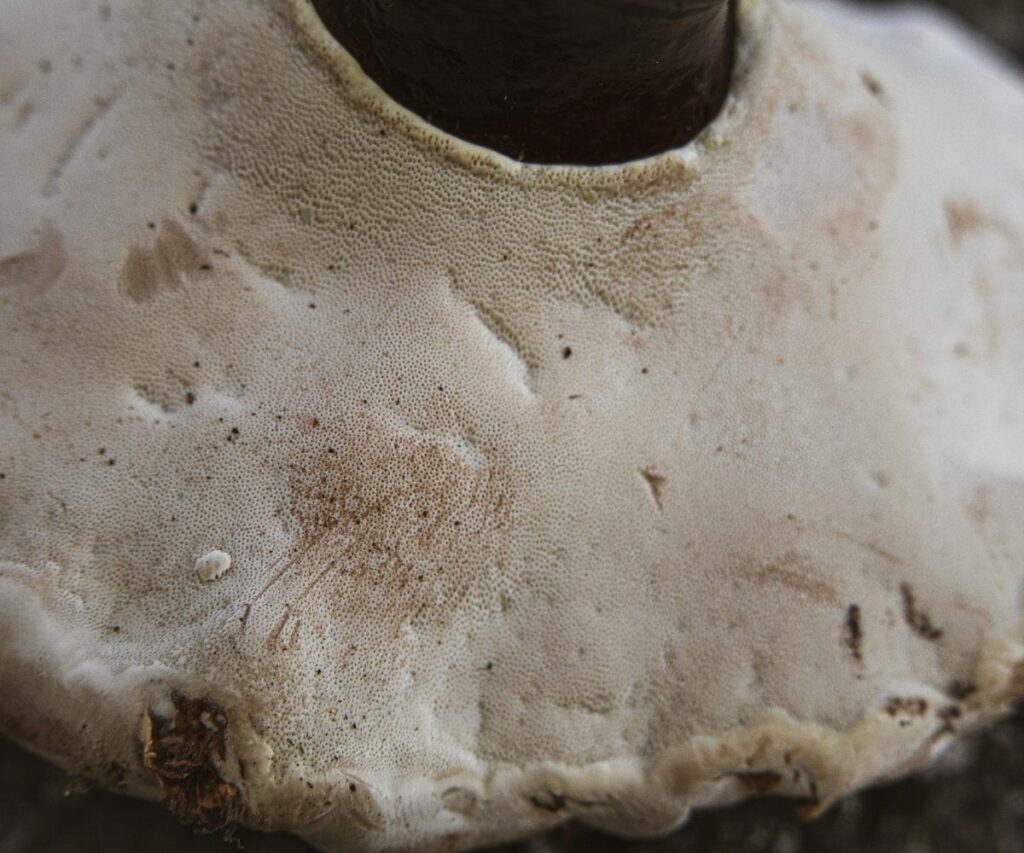
Species Variation
Let’s clear some things up before we move on.
There are around 80 species of Ganoderma that we know about, with Ganoderma lucidum being the most commonly used in Eastern medicine. Besides a few escapees from commercial farms in Utah and California, G. lucidum doesn’t grow in North America.
However, stateside foragers can still find plenty of soul mushrooms in their backyards. We have over a dozen (and possibly many more) Ganoderma species here in the US. All are commonly known as reishi. While we do not yet know if all have the exact same effects as G. lucidum, we have plenty of evidence to support their medicinal use.
Most North American Ganoderma species share some similar macroscopic traits, such as a white pore surface and dark varnished cap. But they can vary widely in appearance, and you don’t want to get thrown off if some of the features differ from the classic ones I’ve outlined above.
To avoid passing up a perfectly good reishi, it’s a good idea to familiarize yourself with the following species and learn how they can vary in appearance:
- Ganoderma curtisii: This species is known as the yellow Reishi and flourishes east of the Rocky Mountains on decaying hardwoods like oak and beech. It is weakly laccate, usually has a stem, and features yellow tones in the cap.
- Ganoderma tsugae: Also known as the hemlock Reishi, this species is found throughout the northwest region of the US. It sprouts directly from coniferous trees and usually lacks a stem. Caps are red and laccate and have no distinct color zones when fully mature.
- Ganoderma sessile: This species is commonly found in more eastern areas of the US and is characterized by its shelf-like growth from the roots and bases of decaying hardwoods. It is more matte than laccate, has a dark brown color, and features a distinct white ring around the cap.
- Ganoderma applanatum: Also known as the artist’s conk, this species is common throughout North America. It lacks the lacquer of other reishi species and is characterized by its dull cap and brilliant brown-staining pore surface, where artists often etch detailed pictures.
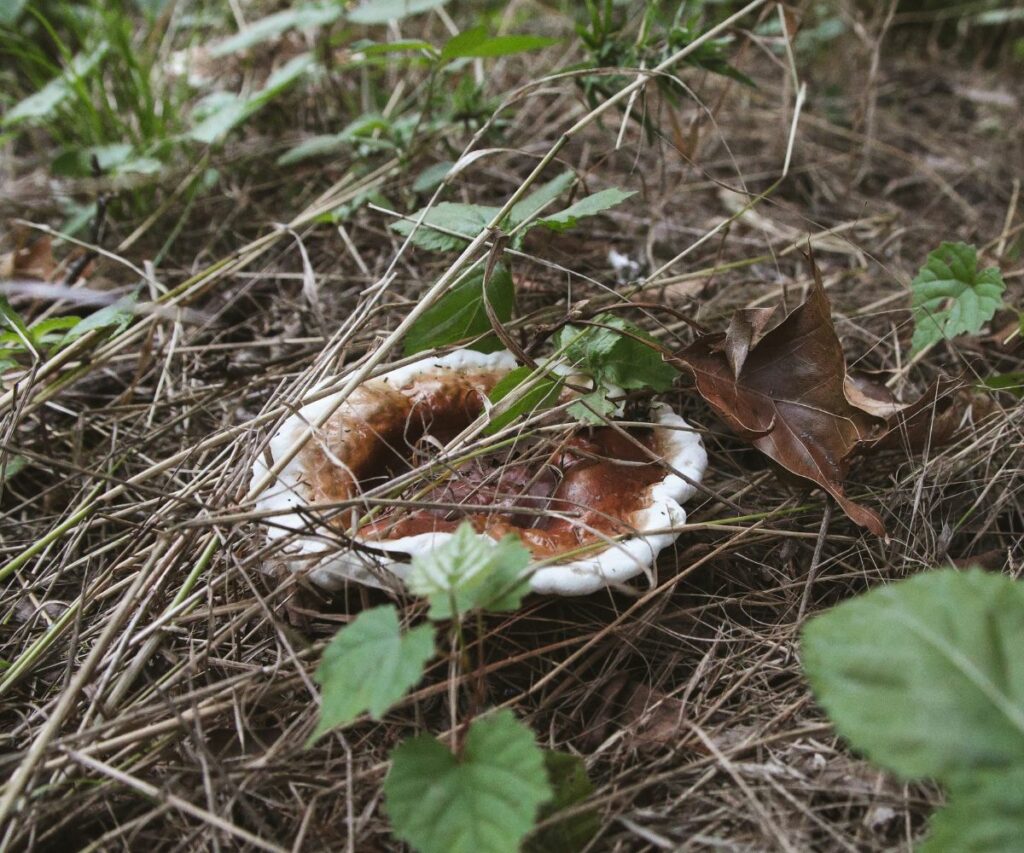
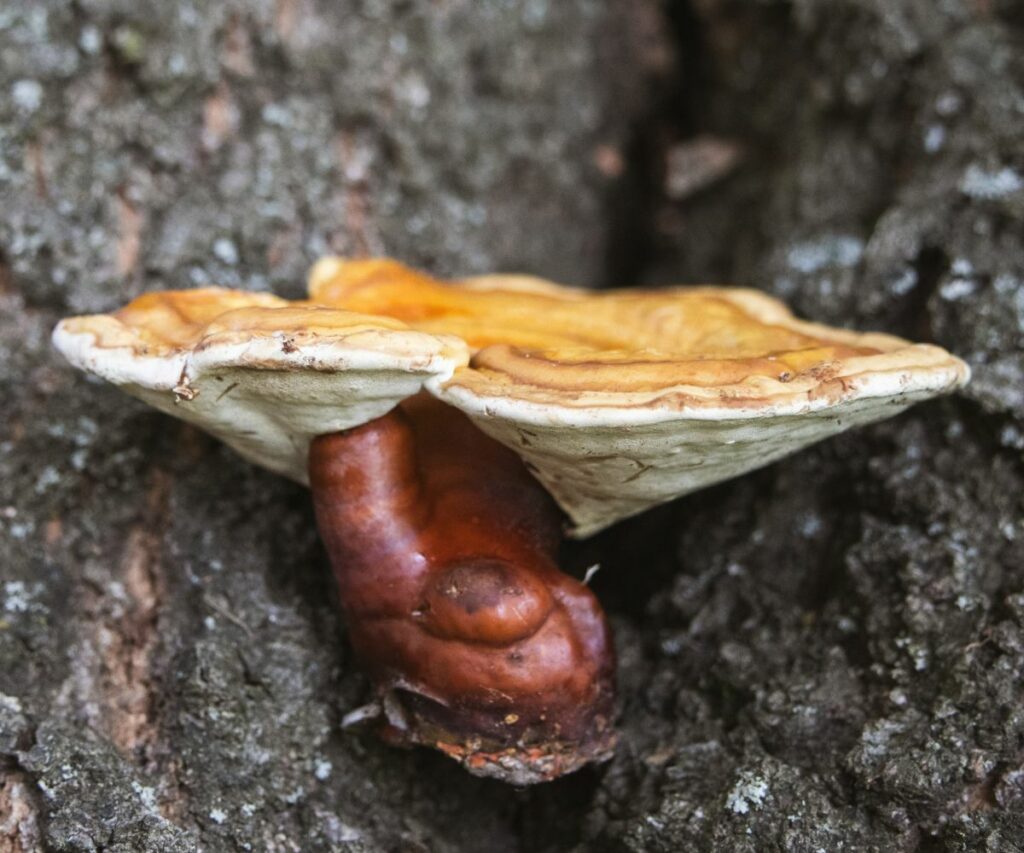
Texture, Taste, and Smell
It’s important to remember that reishi are medicinal, not culinary. They are tender when very young, and some woodland creatures eat them. However, this stops once they reach maturity. Reishi smell and taste earthy, like soil, and are not appetizing in the slightest.
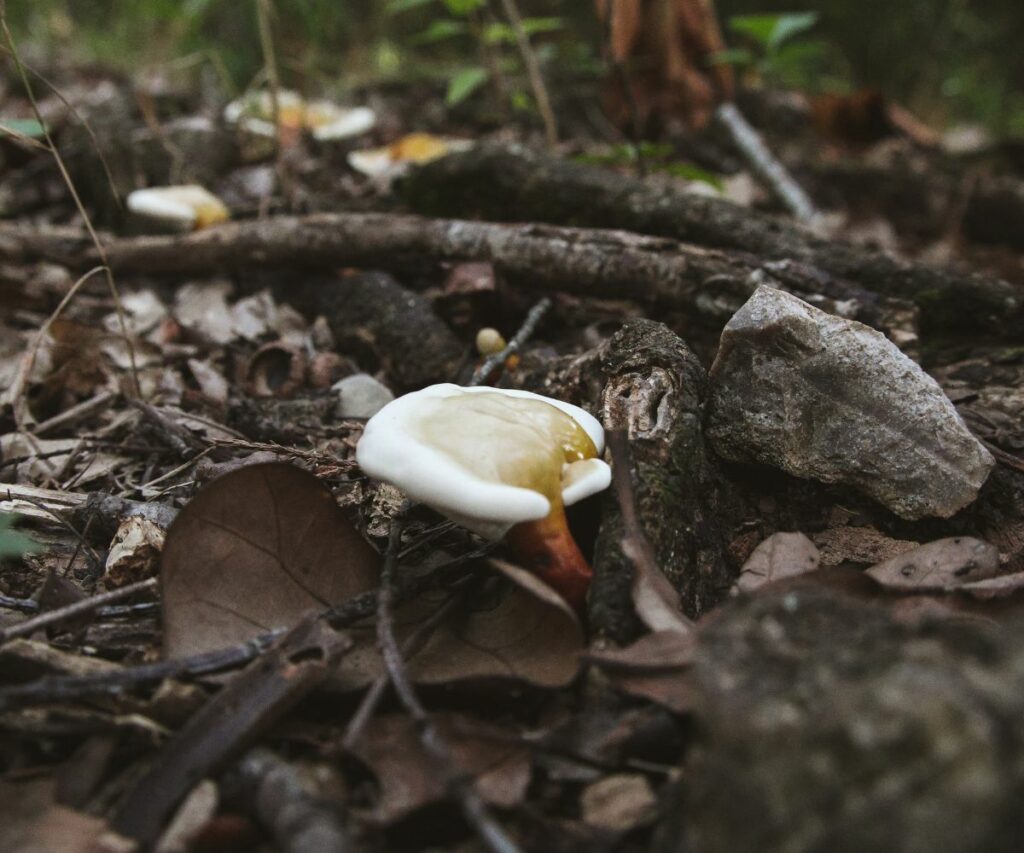
When completely grown, Reishi are tough cookies. They don’t just resemble a lacquered hardwood floor; they also feel like one. Most species bend only slightly under pressure and are difficult to break, with caps that can measure half an inch thick. If the specimen you’re looking at bends easily, it probably isn’t a reishi.
If a reishi does have a stalk, it feels like a miniature tree branch. Like the cap of prime specimens, stalks feature a beautiful lacquer finish akin to varnished mahogany furniture. They are just as difficult to break or slice.
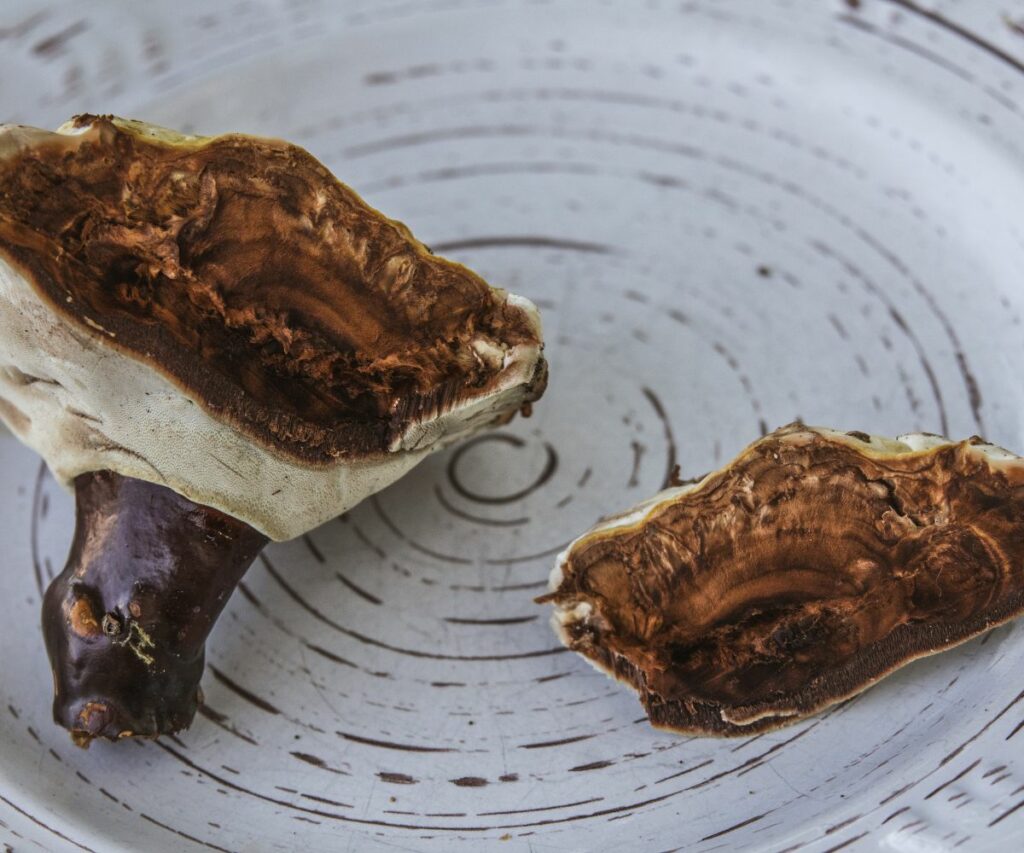
Habitat
Reishi are a resilient bunch and manage to grow pretty much all over the US. Like wood ear mushrooms, they can be saprobic, feeding off decaying plant matter and helping to break it down. However, they can also be parasitic, feeding off living trees.
Either way, reishi is a white rot fungus that spells bad news for its host. When making an identification, it’s wise to examine that host. Is it dead or dying? You’re on the right track. If it’s young and healthy, you may not have a reishi. Or it could be that the host just isn’t showing any outward signs of illness yet.
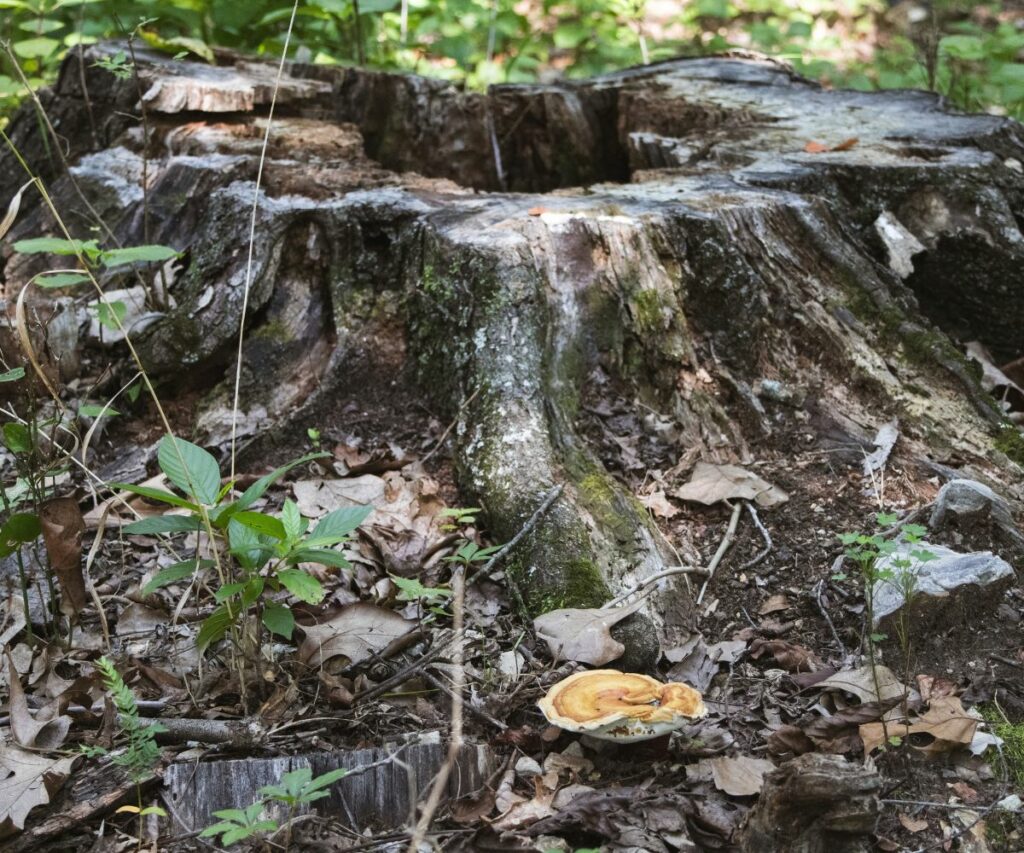
You’ll find reishi primarily in old-growth forests, sprouting on doomed oak, maple, and any species of hardwood. It’s important to note that a few species, such as Ganoderma tsugae and Ganoderma oregonense, grow on evergreen trees — so don’t discount possible specimens growing on pine.
While the substrate species may vary, all reishi require wood to thrive. You will never see them growing from the ground like chanterelles or boletes. Some may appear to sprout from the ground, but this is simple mushroom deception. If you look more closely, you will discover they are growing from underground roots or the vestiges of buried logs.
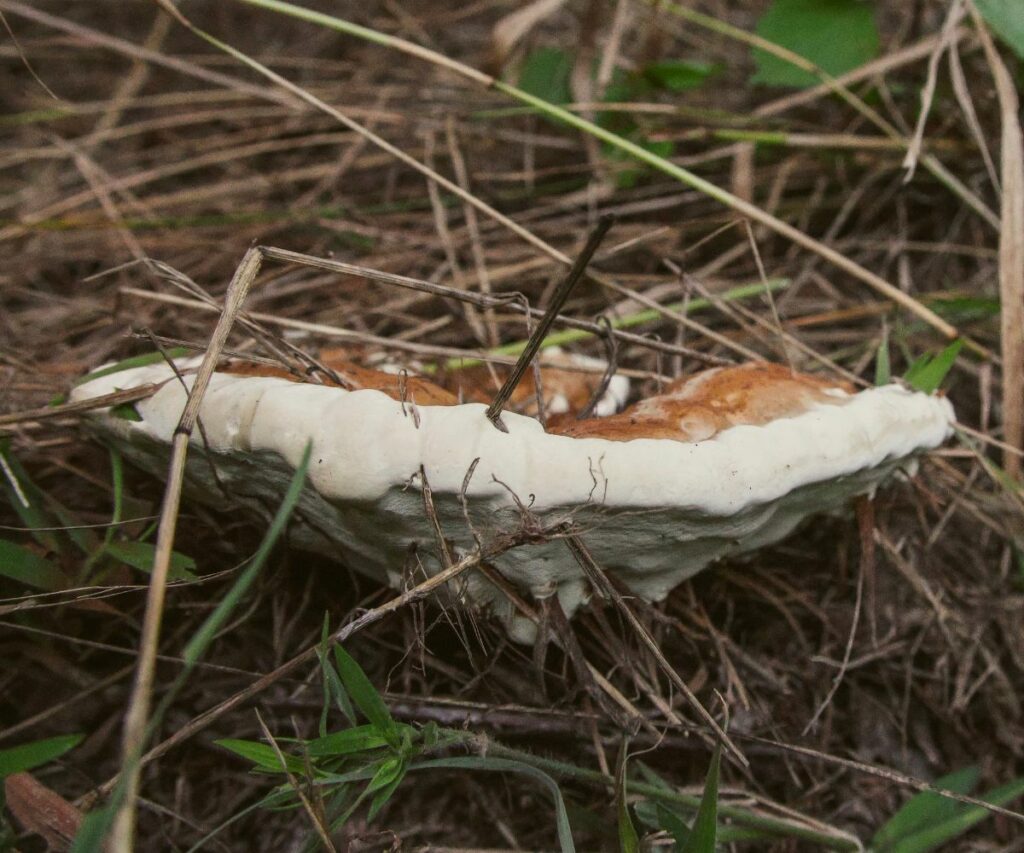
Seasonal and Growing Conditions
Reishi grow worldwide, and different species require different climate conditions to fruit and mature. They generally reach their prime in summer and autumn, with May through November being particularly prolific. However, you might be able to find them fresh at any time, depending on where you live. In the tropics, some specimens hang around all year long!
One great thing about reishi is they don’t spoil quickly. They grow very slowly and take a long time to reach maturity, often weeks or months. This means you don’t have to rush to harvest them or break your back trying to locate them in your area. A series of slow and steady searches should yield great results, and you can usually come back days or even weeks later to find them in relatively the same condition.
The downside of this is that some people wait too long. It’s important not to harvest reishi that have gone moldy since this mold can cause serious illness. Avoid getting sick by examining your harvest closely and discarding any reishi with green or slimy areas. Likewise, do not pick those that have cracked, flaked, or become chalky with age.
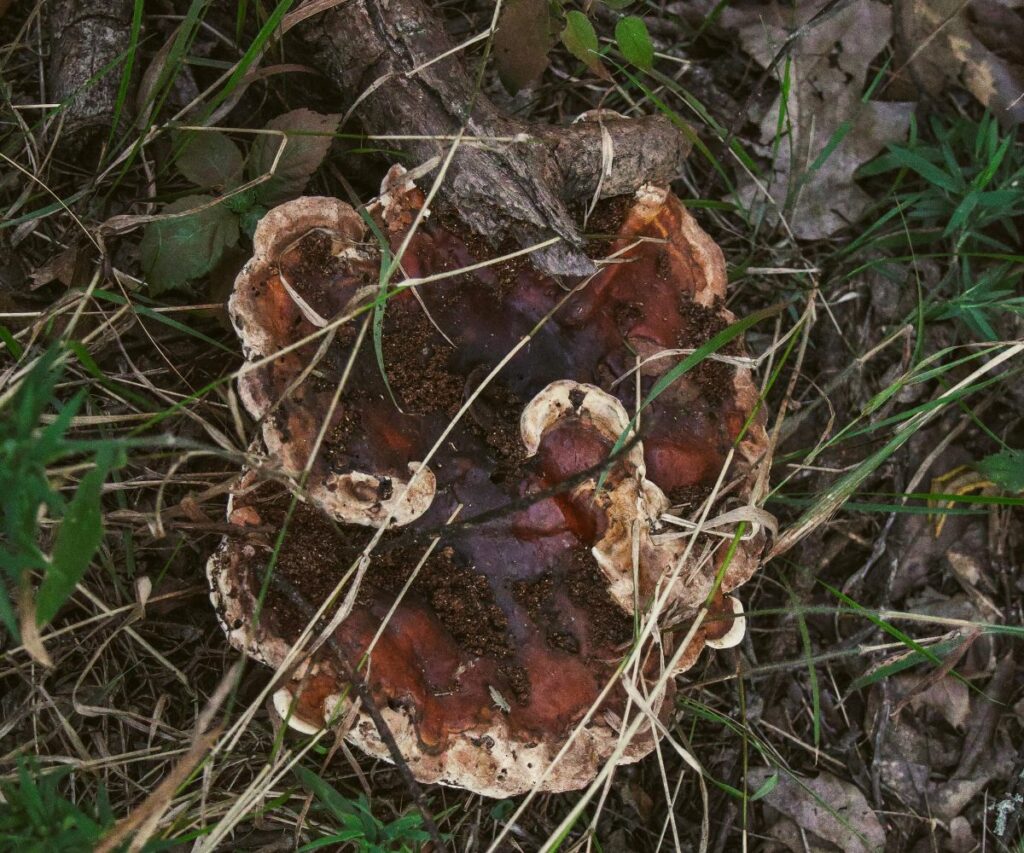
Reishi ID Check
- Laccate cap
- Red, brown, or yellow cap
- Tight, white pore surface
- Lobed margins
- Fan-shaped or kidney-shaped
- No stalk or laccate stalk
- Growing on dead or dying wood
Recognizing Common Look-Alikes
There aren’t any poisonous reishi species or toxic doppelgangers that we know about. This makes foraging them pretty safe, but you should still learn to recognize common look-alikes in the field. Some are a gift unto themselves and can make a valuable addition to your foraging bag!
Red-Belted Conk
Known in the scientific community as Fomitopsis pinicola, the red-belted conk is one of the only fungi whose Latin name is more exciting than its colloquial name. This saprobic polypore is also a dead-ringer for reishi. It grows in shelf-like formations from the wood of hardwoods or conifers, with a shiny red cap on top and a white to yellow pore surface underneath.
So, how can you distinguish this deceiver? Fomitopsis pinicola is perennial and sprouts a fresh pore surface each year. Essentially, a new mushroom grows around the old one. It forms a distinct red band with each passing year, which is how it gets its name. Reishi lacks this band.
Eventually, with several seasons under its red belt, the fruiting body may begin to resemble a thick hoof — this never happens with reishi. If you’re still unsure, flip the specimen over and scratch the pore surface. A reishi stains brown when bruised, while a red-belted conk doesn’t stain at all.
If you find it: Harvest and tincture it! People have historically used red-belted conks for its antimicrobial and immune-boosting properties. Modern investigatory research has even demonstrated its efficacy as an antitumor agent.
Resinous Polypore
The resinous polypore, or Ischnoderma resinosum, occurs commonly across the nation but is more concentrated in the Midwest and Southeast. It is a saprobic bracket fungus that grows directly from wood, with a velvety brown or reddish cap and a white-ringed margin. The pore surface is tight, white, and quickly stains brown when scratched.
As you can see, this polypore shares many macroscopic features with reishi, particularly Ganoderma applanatum. However, handling the mushroom will usually set you straight. While reishi are hard and woody, resinous polypores are flexible and soft. When broken, young specimens are white inside. This is also a distinguishing feature since reishi are dark.
As resinous polypores age, they harden, and their inner flesh darkens. However, the cap will also darken with age and lose its luster. At this point, you may distinguish a resinous polypore by its lack of lacquer.
If you find it: Harvest and eat it! When young and fresh, resinous polypore is a delicious addition to stir-fries and has a beefy, meaty texture. You can use older specimens for soup stock.
